I’m going to have to say that this year’s trees at Epcot are some of the best I’ve seen. And I don’t even have one in this year and yet my magnamity abounds and overflows. Even though one of my trees isn’t there, it’s still a great showing for the hardworking artists from the State of Florida. Seriously though, a big thank you to them all. It’s tough to lend your babies to a show that lasts not one day, or a weekend or a week but for three (that’s 3) months.
How can any organization, or even Disney, handle keeping trees alive in the Florida sun for that long? They must grow and need water and fertilizer right?
Well, firstly, the Disney horticulturalists take care of the watering, with some initial instructions from the BSF organizers. Then, once a week, a member of the maintenance team goes into the park and inspects, trims, pulls weeds and takes care of any special exhibitor requests (….can you put some of my homemade fertilizer brownies around my tree, make sure they aren’t touching the pot…but they must be 2.33 inches apart and 1.62 centimeters from the trunk….Okay, no one’s ever said that.. yet). I am on this highly exclusive and elite team and that’s how I was able to get such good pics….speaking of which, let’s get to them, too many words.
 The above tree belongs to my friend Rick. A bougie basking in the Florida sun.
The above tree belongs to my friend Rick. A bougie basking in the Florida sun.
Unfortunately, due to some construction occurring in the Japanese Pavilion, the amount of trees that the Bonsai Societies of Florida were able to show was reduced; the usual number is 21and there are only fifteen this year.
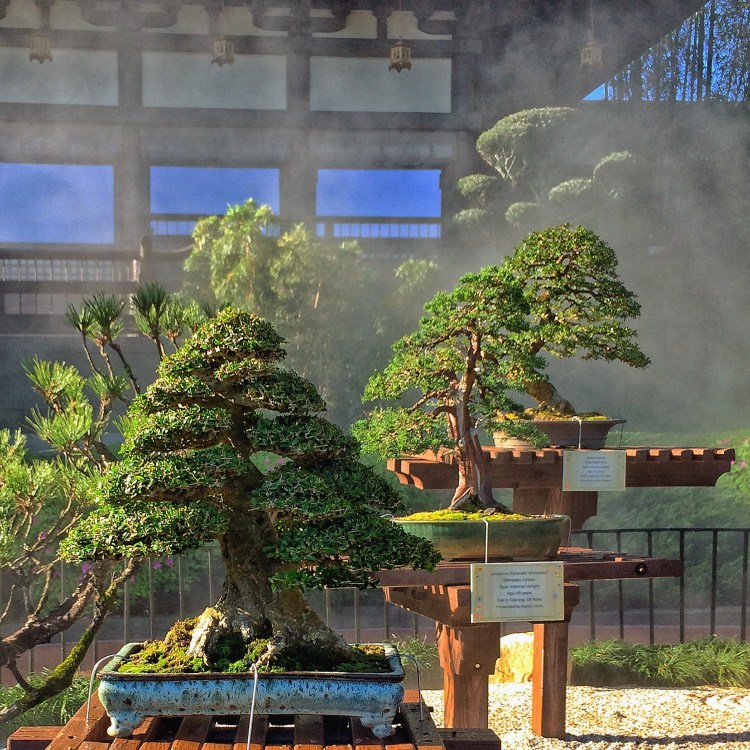 Trees in the morning mist
Trees in the morning mist
Beginning with the trees in what is called the zen garden we have an amazing black pine.
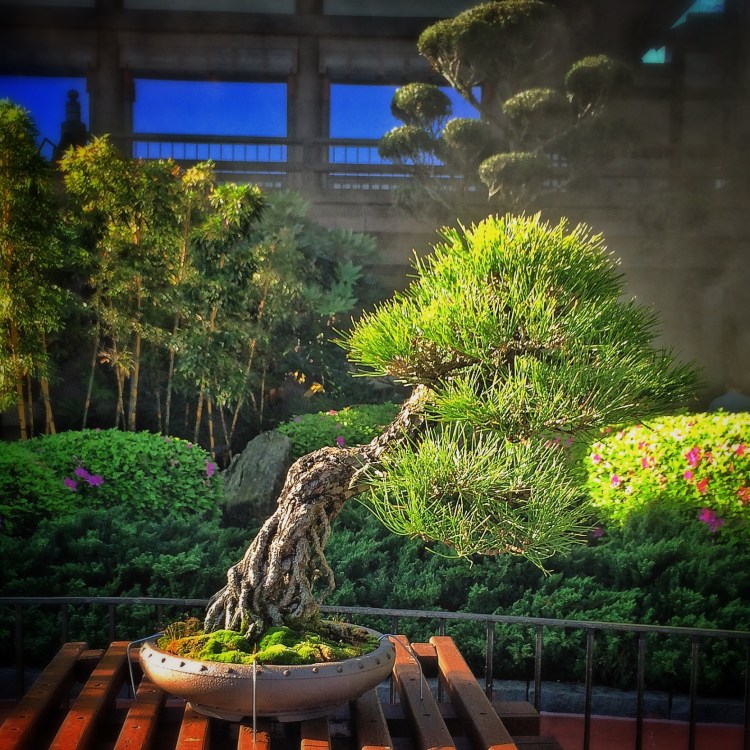 This tree was grown in zone 9. Most online bonsai guides say this is impossible. There you go.
This tree was grown in zone 9. Most online bonsai guides say this is impossible. There you go.
The next tree is a bucida spinosa (a dwarf black olive).
 This is an amazing specimen in that it has a substantial trunk, has movement and, the most surprising thing, it was an air layer. It took two years to put roots out.
This is an amazing specimen in that it has a substantial trunk, has movement and, the most surprising thing, it was an air layer. It took two years to put roots out.
Next we have an old and well developed neea buxifolia.
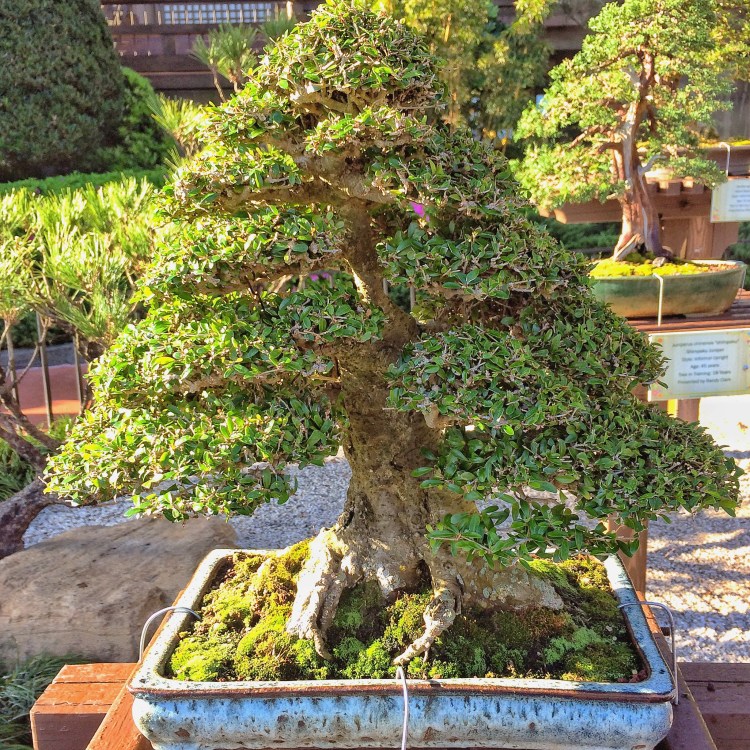 Most neeas are collected from the mountains of Puerto Rico and this one is estimated to have been 50 years old when collected.
Most neeas are collected from the mountains of Puerto Rico and this one is estimated to have been 50 years old when collected.
Next tree is a serissa japonica (the name has been changed recently from serissa foetida to serissa japonica) and it is the best serissa I’ve ever seen.
 Not to mention that it’s still alive (most people kill serissa, it’s a tough tree to grow. The owner is a master at it though).
Not to mention that it’s still alive (most people kill serissa, it’s a tough tree to grow. The owner is a master at it though).
Next tree is a juniperus chinensis (shimpaku juniper)
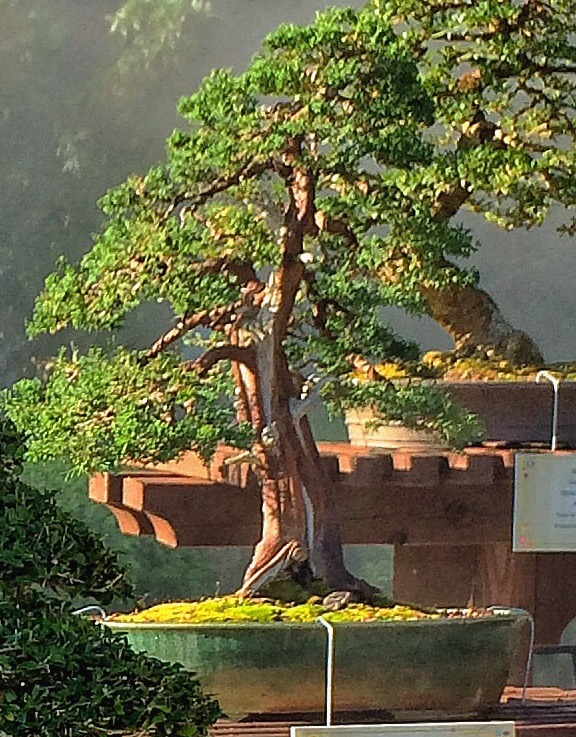 I didn’t get a good pic (sorry Randy!) but it’s an great tree. It was recently restyled by a great new talent in Florida, David Cutchin. He came by the nursery during my convalescence to help me out and I thank him.
I didn’t get a good pic (sorry Randy!) but it’s an great tree. It was recently restyled by a great new talent in Florida, David Cutchin. He came by the nursery during my convalescence to help me out and I thank him.
Moving on to what is called The Meadow (located on the walkway up to the Japanese quick service restaraunt) we have the worst pictures of the post but still some great trees.
I apologize to Mike for the terrible picture of his jaboticaba. The tree really deserves a better documentation.
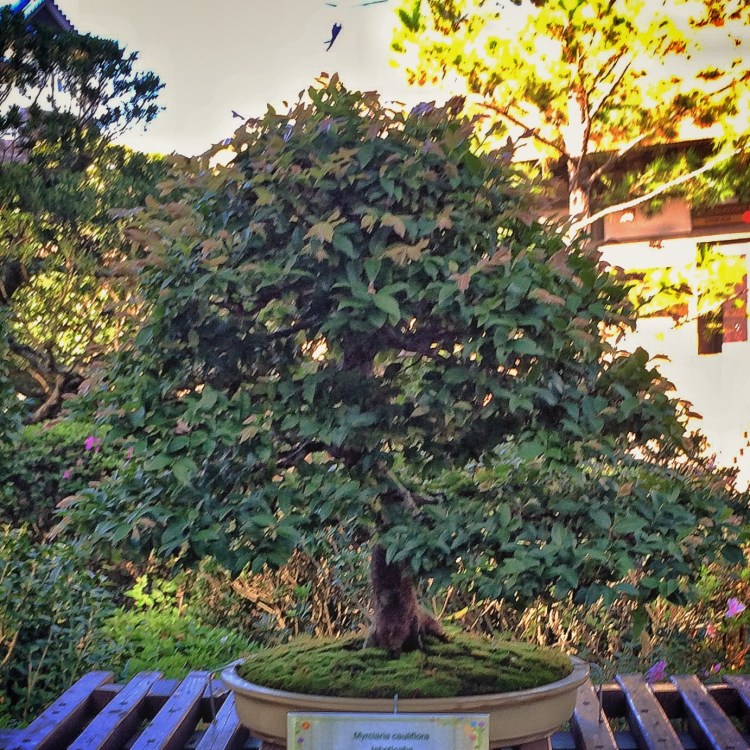
There is some debate as to the proper botanical name (some say myrciaria cauliflora and some say plinia cauliflora…..I think the latter is the accepted one in the scientific community but the former is the accepted one in the bonsai community. And we all know how hard it is to change the status quo here….). There’s also a difference in the spelling of the common name: jaboticaba and jabuticaba. The name is from Brazilian Portuguese and I’ve heard it pronounced the correct way…..I don’t think either of those spellings are correct.
Anywho, no matter the name, the tree is a good bonsai.
The next tree is a celtis laevigata (sugarberry or southern hackberry).
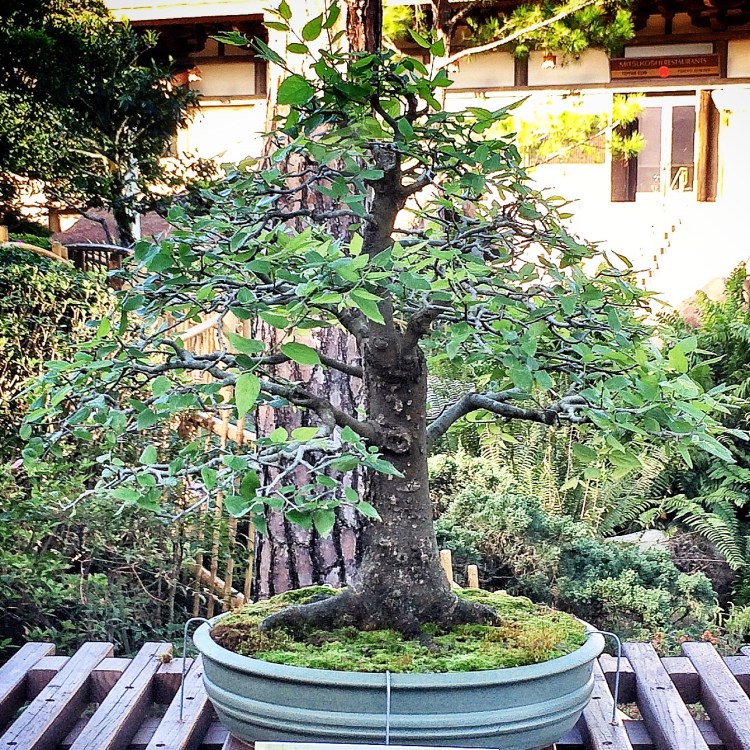 It’s an American native tree that is underused in my opinion. Again, it’s a bad picture.
It’s an American native tree that is underused in my opinion. Again, it’s a bad picture.
Next we have a juniperus chinensis “parsonii” (parsons juniper)
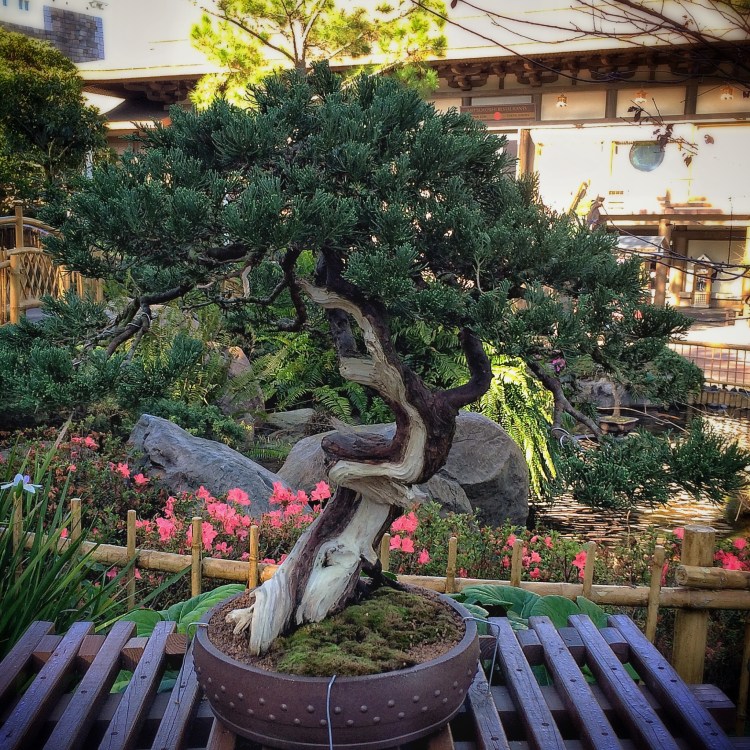 It’s a really well done juniper as this variety is hard to keep in scale growth. It’s a juniper that’s well adapted to Florida’s climate and is widely planted in the landscape.
It’s a really well done juniper as this variety is hard to keep in scale growth. It’s a juniper that’s well adapted to Florida’s climate and is widely planted in the landscape.
Now we move to the right side of the Tori gate and a massive conocarpus erectus (buttonwood)
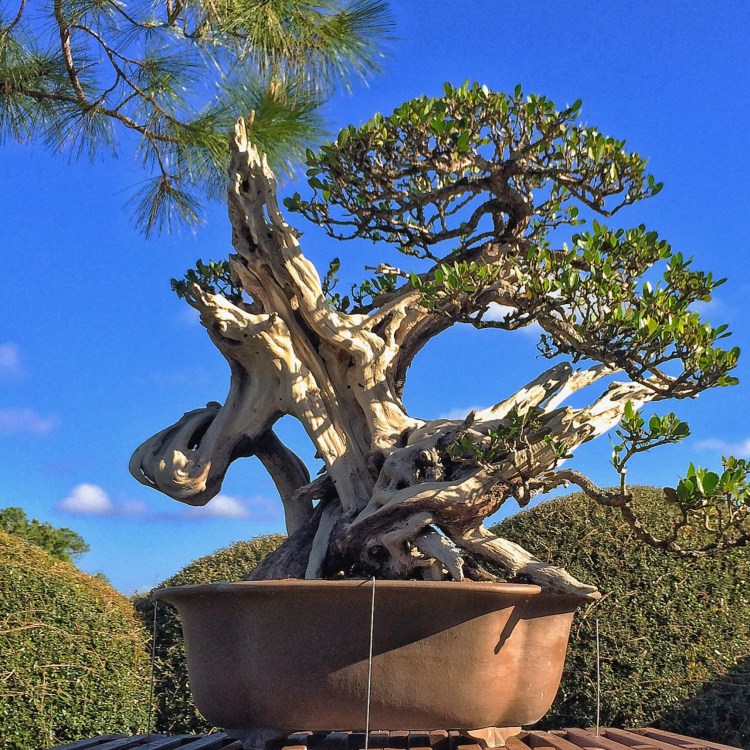 This is an old tree and has been a bonsai for a long time, Masterfully done.
This is an old tree and has been a bonsai for a long time, Masterfully done.
Then a Japanese black pine (pinus thunbergiana) by friend Rob.
 An, almost, formal upright. Very well done and, if I know Rob, he grew every one of those branches.
An, almost, formal upright. Very well done and, if I know Rob, he grew every one of those branches.
Then we have a nice ulmus chinensis (chinese elm)
 Good, right? None better.
Good, right? None better.
Next is an awesome bald cypress from the BSF President and Mrs President
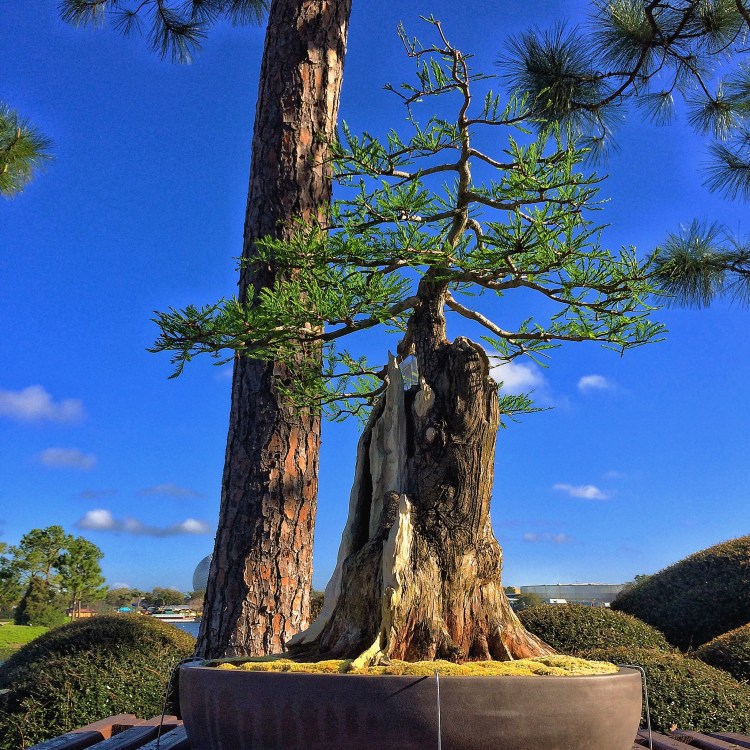 What a fantastic trunk.
What a fantastic trunk.
How about we visit the tree in the koi pond?
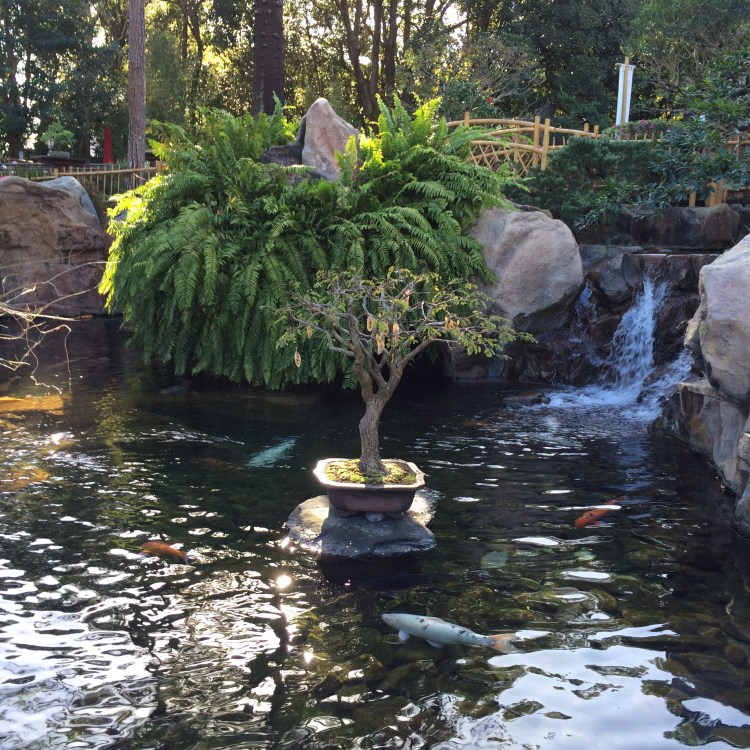 Commonly called horseflesh mahogany or wild tamarind the binomial name of this tree is lysiloma latislqua. It hasn’t woken up from winter yet but I will get pics when it does (you’ll have to watch my Facebook or Instagram feed to see them though). This is a big, impressive tree but, no matter how big the trees usually are, they always look small in the koi pond.
Commonly called horseflesh mahogany or wild tamarind the binomial name of this tree is lysiloma latislqua. It hasn’t woken up from winter yet but I will get pics when it does (you’ll have to watch my Facebook or Instagram feed to see them though). This is a big, impressive tree but, no matter how big the trees usually are, they always look small in the koi pond.
Only two trees left, on the other side of the tori gate.
An Australian pine (casuarina equestifolia)
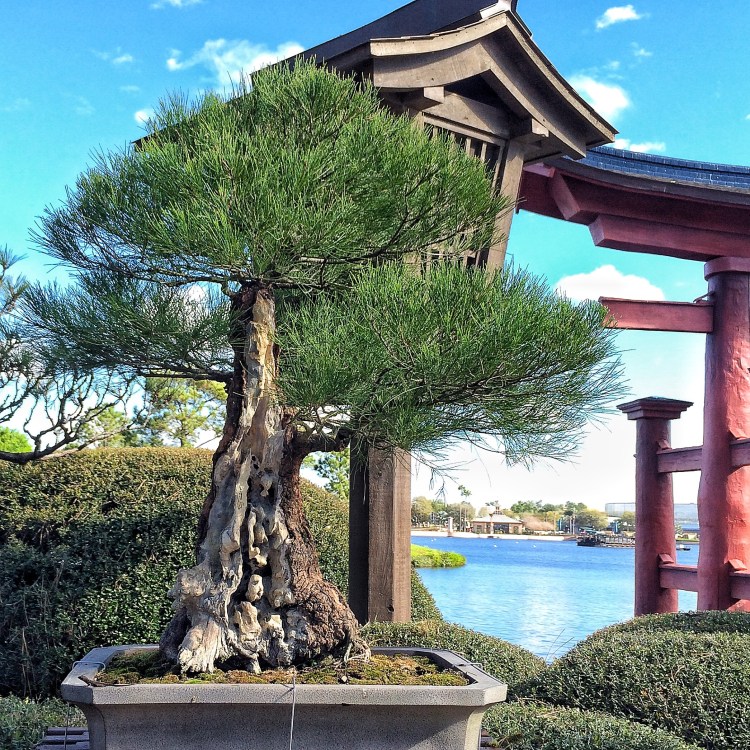 The deadwood on the front was all carved.
The deadwood on the front was all carved.
And last but not least, a bougie from my bud Rick.
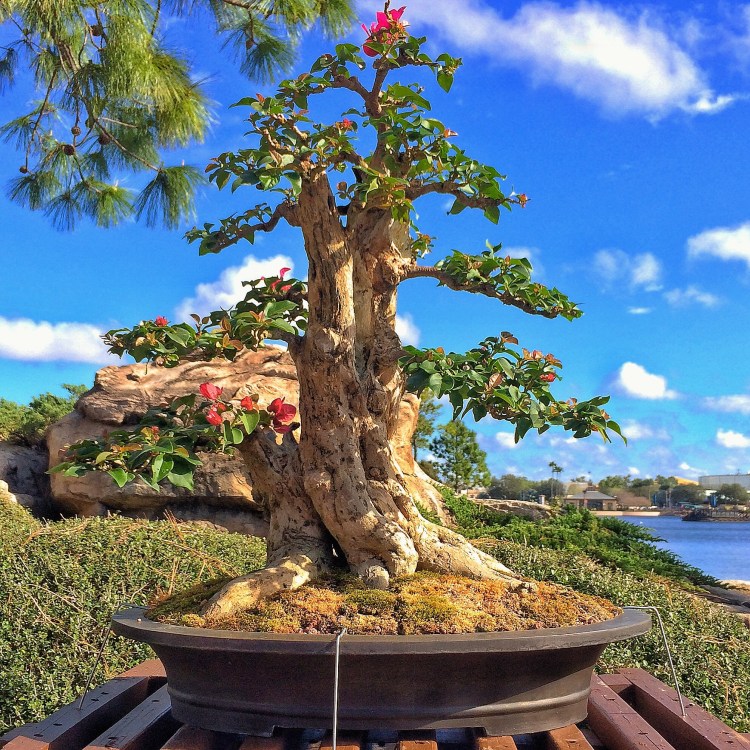
It’s going to be the most showy tree here in just a few weeks, when it’s full of blossoms. It will outshine them all.
And that’s all of them.
The show lasts until May the 17th, make the trip, not only is it Disney (Disney!) but seeing these trees are worth the price of admission alone.
In brazil we called JABUTICABA ! There are two especies here, the sabara one and hibrid. this one in the picture is a sabara, that have small leaves and more colour in the trunck!
LikeLike
spectacular trees this year-thanks for the photos
LikeLike
i am sorry but i think this jabuticaba is a hibrid one!!! the leaves are to large!
LikeLike
sabara has a dark green in the leaves
LikeLike
Thanks for the shout out Adam………..you take some great pics
LikeLike
I can’t take good pics without great subjects Rick
LikeLike
WOw! So glad you shared.
LikeLike
Wow!
LikeLike